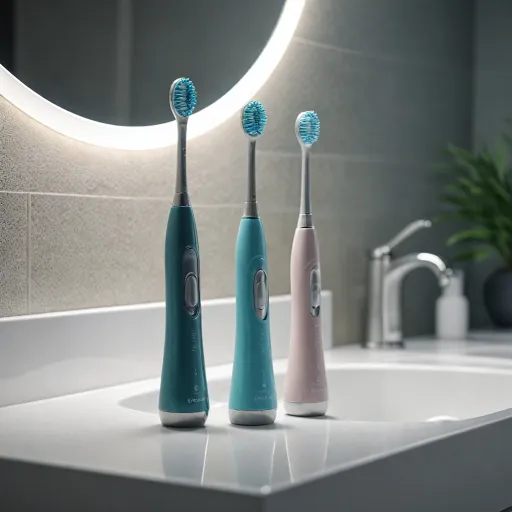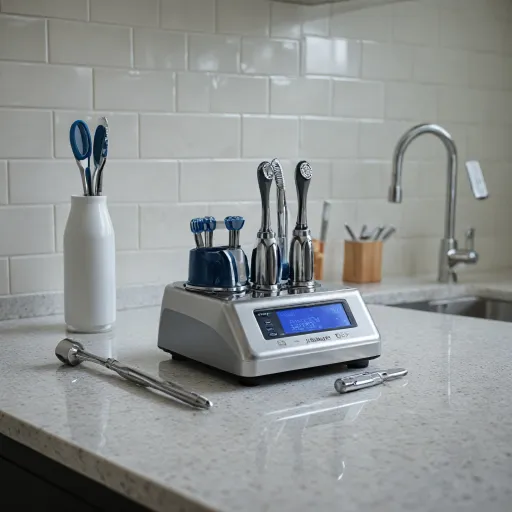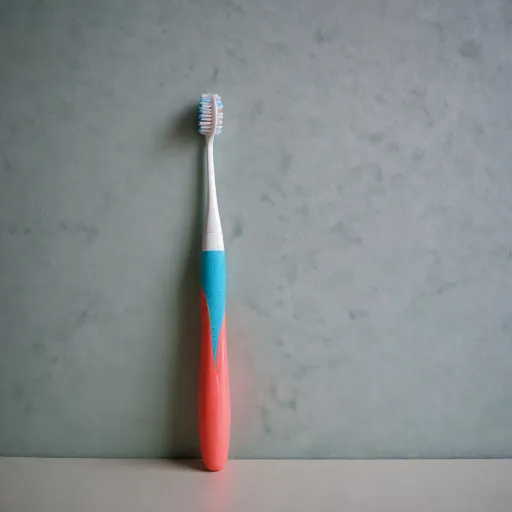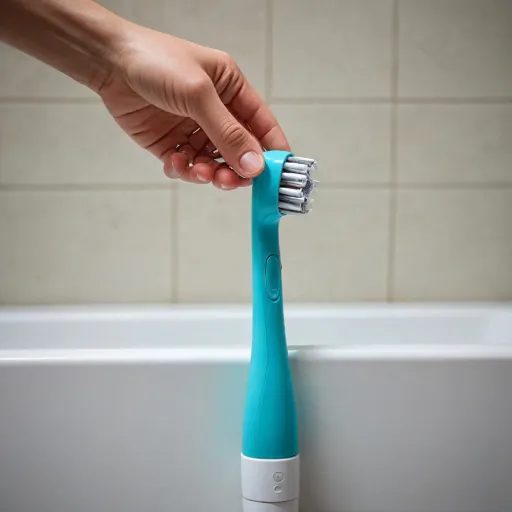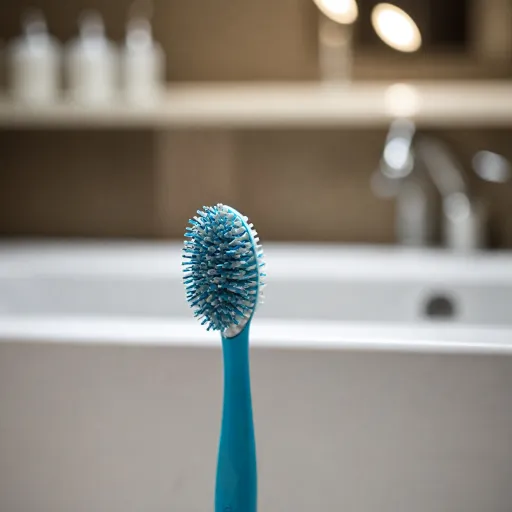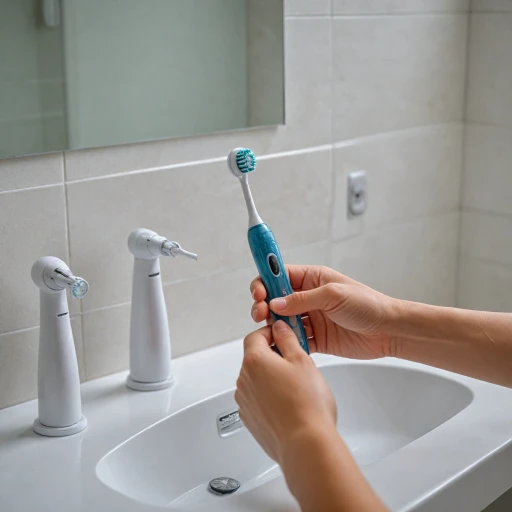
Understanding periodontal disease and its impact on oral care
How periodontal disease affects your gums and teeth
Periodontal disease, often called gum disease, is a chronic infection that damages the soft tissue and bone supporting your teeth. It usually starts with plaque buildup along the gumline. Plaque is a sticky film of bacteria that forms on teeth and, if not removed by regular brushing, can harden into tartar. This can lead to inflammation, bleeding gums, and eventually gum recession or even tooth loss.
Why gum health is crucial for overall oral health
Healthy gums are the foundation of a healthy mouth. When gums become inflamed or start to recede, it creates pockets where bacteria can thrive. This not only affects your teeth but can also contribute to bad breath and impact your overall health. Studies have linked gum disease to other health issues, such as heart disease and diabetes. That’s why maintaining gum health through effective cleaning is essential.
Recognizing the signs of periodontal disease
- Red, swollen, or bleeding gums
- Persistent bad breath
- Gum recession or teeth appearing longer
- Loose teeth or changes in bite
If you notice any of these symptoms, it’s important to consult a dental professional. Early intervention can help prevent further damage and improve your oral health.
Why choosing the best toothbrush matters
For people with periodontal disease, the right toothbrush can make a significant difference. Electric toothbrushes, especially those designed for gum care, can remove more plaque and provide a gentler cleaning experience for sensitive or receding gums. Choosing the right electric toothbrush for sensitive gums can help you maintain healthy gums and reduce the risk of further dental problems. In the next sections, we’ll explore why electric toothbrushes are recommended for gum health and what features to look for when selecting the best toothbrush for your needs.
Why electric toothbrushes are recommended for gum health
Why dentists recommend electric toothbrushes for gum care
People with periodontal disease often hear that switching to an electric toothbrush can make a big difference in their gum health. The main reason is that electric toothbrushes are designed to remove more plaque and bacteria from teeth and gums compared to manual brushes. This is especially important for those with gum disease, as plaque buildup is a major contributor to inflammation, bleeding gums, and gum recession.
How electric toothbrushes support healthier gums
Electric toothbrushes use oscillating, rotating, or sonic movements to provide a more consistent and thorough cleaning. These movements help dislodge plaque from hard-to-reach areas around the gum line and between teeth. For people with periodontal disease, this means less risk of plaque turning into tartar, which can worsen gum problems.
- Pressure sensors: Many electric toothbrushes include pressure sensors that alert you if you are brushing too hard. This is crucial for those with receding gums or sensitive gum tissue, as excessive pressure can cause further damage.
- Timer features: Built-in timers help ensure you brush for the recommended two minutes, improving overall oral health and reducing the risk of missed spots.
- Specialized brush heads: Some electric toothbrushes offer brush heads designed for gum care, with softer bristles and shapes that gently clean along the gum line.
Scientific support for electric toothbrushes in gum disease management
Clinical studies have shown that electric toothbrushes, especially those with sonic technology like Philips Sonicare, can significantly reduce plaque and gingivitis compared to manual brushing. This leads to healthier gums, less bleeding, and better management of periodontal disease. According to dental professionals, the consistent motion and advanced features of electric toothbrushes make them the best choice for people struggling with gum disease.
If you want to learn more about how a periodontal toothbrush can enhance your oral health routine, check out this guide on enhancing oral health with a periodontal toothbrush.
Key features to look for in an electric toothbrush for periodontal disease
Essential Features for Gum and Oral Health
When searching for the best electric toothbrush for periodontal disease, it’s important to focus on features that support gum health and effective plaque removal. Not all electric toothbrushes are created equal, and some are specifically designed to address the unique challenges of gum disease, receding gums, and sensitive teeth.
- Pressure Sensor: A pressure sensor is crucial for people with gum disease or bleeding gums. This feature alerts you if you’re brushing too hard, helping to prevent further gum recession and irritation. Many leading models, such as Philips Sonicare, include this technology.
- Soft Brush Heads: Choose a toothbrush with soft or extra-soft brush heads. These are gentle on gums and teeth, reducing the risk of damaging sensitive areas. Specialized brush heads for gum care are available for most major brands.
- Multiple Cleaning Modes: Look for electric toothbrushes offering modes like “Gum Care,” “Sensitive,” or “Whitening.” These settings allow you to tailor your brushing routine to your oral health needs, especially if you’re dealing with gum recession or periodontal disease.
- Timer and Quadpacer: Built-in timers ensure you brush teeth for the dentist-recommended two minutes. A quadpacer helps you evenly clean all areas of your mouth, supporting overall dental health.
- Compatibility with Replacement Heads: Regularly changing your brush head is essential for maintaining healthy gums and effective cleaning. For step-by-step guidance, check out this guide on changing the head on your Sonicare toothbrush.
- Long Battery Life: A reliable battery ensures your electric toothbrush is always ready, supporting consistent oral care routines.
Comparing Features: What Matters Most?
| Feature | Why It Matters for Gum Health |
|---|---|
| Pressure Sensor | Prevents over-brushing and protects receding gums |
| Soft Brush Head | Gentle on sensitive gums, reduces bleeding and irritation |
| Gum Care Mode | Optimized cleaning for those with gum disease |
| Timer/Quadpacer | Encourages thorough and even brushing |
| Replacement Head Compatibility | Ensures ongoing effective cleaning and gum care |
Choosing an electric toothbrush with these features can make a significant difference in managing periodontal disease and maintaining healthy gums. Remember, the right brush supports your overall oral health routine, including proper brushing technique and regular dental checkups.
Comparing popular electric toothbrush models for periodontal disease
How Top Electric Toothbrushes Stack Up for Gum Health
When it comes to managing periodontal disease, not all electric toothbrushes are created equal. The best models for gum care combine advanced features that support oral health, help prevent gum recession, and make daily brushing more effective and comfortable. Here’s a look at how some of the most popular electric toothbrushes compare for people with gum disease.| Model | Key Features | Gum Care Benefits | Price Range |
|---|---|---|---|
| Philips Sonicare ProtectiveClean 6100 |
|
|
$$ |
| Oral-B Genius X |
|
|
$$$ |
| Philips Sonicare DiamondClean Smart |
|
|
$$$$ |
| Oral-B Pro 1000 |
|
|
$ |
What to Consider When Comparing Electric Toothbrushes
- Pressure sensors are crucial for protecting receding gums and preventing further gum recession. They alert you if you’re brushing too hard, which is a common cause of gum damage.
- Brush heads designed for gum care or sensitive teeth are softer and shaped to clean along the gumline without causing irritation. Some models, like Philips Sonicare, offer specialized brush heads for gum health and teeth whitening.
- Cleaning modes tailored for gum disease, such as Gum Care or Sensitive, provide a gentler brushing experience while still removing plaque effectively.
- Smart features like app connectivity and brushing feedback can help improve your technique, making it easier to maintain healthy gums and better oral health overall.
Proper brushing techniques for people with periodontal disease
Gentle Motions for Sensitive Gums
When dealing with periodontal disease, using the right brushing technique is just as important as choosing the best electric toothbrush. Aggressive brushing can worsen gum recession and cause bleeding gums, so a gentle approach is essential. Most dental professionals recommend holding the brush head at a 45-degree angle to the gum line. Let the electric toothbrush do the work—avoid scrubbing back and forth. Instead, guide the brush slowly along each tooth and gum area, allowing the bristles to clean effectively without excess pressure.
Let the Technology Work for You
Modern electric toothbrushes, especially models like Philips Sonicare, are designed to help users avoid common mistakes. Many feature a pressure sensor that alerts you if you are pressing too hard, which is crucial for protecting receding gums and maintaining healthy gums. Some brush heads are specifically made for gum care, with softer bristles and smaller sizes to reach along the gum line and between teeth. Using these features can help remove plaque and support overall gum health without causing further irritation.
Timing and Coverage Matter
For optimal oral health, brush teeth for at least two minutes, twice a day. Most electric toothbrushes include a built-in timer to help you reach this goal. Divide your mouth into four sections and spend about 30 seconds on each. Make sure to cover all surfaces—outer, inner, and chewing surfaces of the teeth, as well as the gum line. Don’t forget to gently clean the area where the teeth meet the gums, as this is where plaque tends to build up and can lead to gum disease.
Replace Brush Heads Regularly
Worn-out brush heads are less effective at cleaning and can even harm sensitive gums. Replace your brush head every three months, or sooner if the bristles become frayed. Many electric toothbrushes have reminder bristles that fade in color, signaling when it’s time for a new head. Using a fresh brush head ensures the best cleaning and gum care performance.
- Use a soft-bristled brush head designed for gum care
- Hold the brush at a 45-degree angle to the gum line
- Let the electric toothbrush glide gently—no scrubbing
- Brush for at least two minutes, twice daily
- Replace brush heads every three months
Consistent, gentle brushing with the right electric toothbrush and technique can make a significant difference in managing periodontal disease and improving gum health. If you experience persistent bleeding gums or bad breath, consult your dental professional for personalized advice.
Additional tips for maintaining gum health beyond brushing
Beyond Brushing: Daily Habits for Stronger Gums
Maintaining healthy gums and managing periodontal disease goes far beyond just using the best electric toothbrush. While choosing the right brush head and features like a pressure sensor or specialized gum care mode can make a big difference, your daily habits and overall oral health routine play a crucial role.
- Flossing and Interdental Cleaning: Brushing alone cannot remove all plaque and debris between teeth. Use dental floss or interdental brushes daily to clean those hard-to-reach areas and prevent gum recession.
- Regular Dental Checkups: Professional cleanings and checkups help detect early signs of gum disease and ensure your brushing technique is effective. Your dental professional can recommend the best toothbrush or brush heads for your needs.
- Gentle Brushing Technique: Even with an electric toothbrush, avoid pressing too hard. Let the brush do the work. Many electric toothbrushes, such as Philips Sonicare, include a pressure sensor to alert you if you’re brushing too firmly, which helps prevent gum damage and bleeding gums.
- Healthy Diet Choices: A balanced diet rich in vitamins and minerals supports gum health. Limit sugary snacks and drinks, as they contribute to plaque buildup and bad breath.
- Quit Smoking: Smoking is a major risk factor for gum disease and can slow healing. Quitting can significantly improve your oral health and reduce the risk of receding gums.
- Monitor for Symptoms: Watch for signs like persistent bleeding gums, gum recession, or bad breath. Early intervention is key to preventing further damage.
Optimizing Your Oral Care Routine
For those with periodontal disease, combining the right electric toothbrush with good habits is essential. Consider using brush heads designed for gum care, and replace them every three months or sooner if bristles are frayed. Some models, like those from Philips Sonicare, offer specialized gum care modes and whitening features to support both gum and teeth health.
Remember, the best toothbrush is only as effective as your overall routine. Consistency, gentle technique, and regular dental visits are the foundation of healthy gums and long-term oral health.





